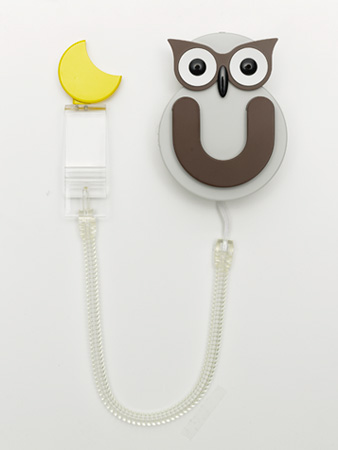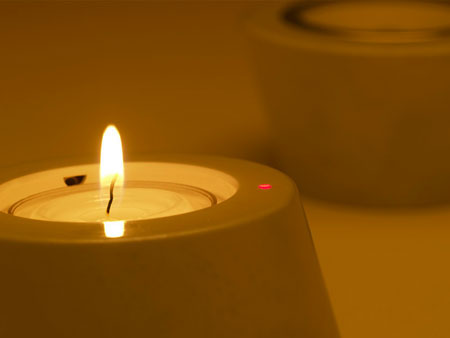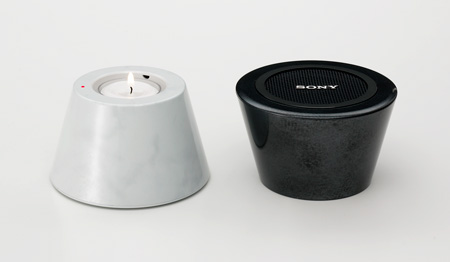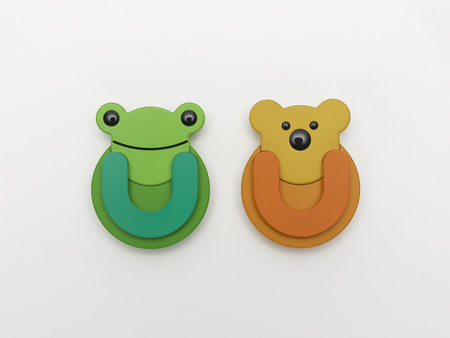
What is Special Moments?
In the Special Moments project we propose a new category of casual sound recording devices that can be used to capture and store our everyday experiences in the form of "sound albums".
Our goal was to design a collection of simple and inexpensive recording objects that would blend into everyday environments and would be used effectively without pressing buttons or selecting items from a menu. In fact, our devices do not have any displays and controls in the traditional sense. Instead they rely on embodied and gestural interaction to seamlessly blend sound recording into everyday user activities.
We implemented two working prototypes: a candle recorder, which captures the general atmosphere at a party, and a book recorder, which records the interactions between parents and children while they are reading a book together.
Design principles
Our objects were designed based on the following principles:
1. Context-dependent and context-aware interaction. We surveyed a wide range of human activities and concluded that in everyday life there are very few situations when recorded sound presents value to users. Therefore we designed our devices to be highly context-specific, i.e. they were designed to operate only in those situations where sound recording is desirable. Their typical operations, such as starting or stopping recordings, are triggered by recognizing appropriate changes in the surrounding context.
2. Embodied interaction. We observed that often there are certain signature objects that are key for a specific context, e.g. a candle is an important object at a birthday party or a candlelight dinner. By embedding sensors into these objects we can track their state and estimate context changes, e.g. when the light of the candle is extinguished we can conclude that the candlelight dinner is over. These objects can become natural interface "controls". Their normal, conventional use can replace generic user interface elements such as buttons and switches.
3. Self-contained sound albums. The devices that we developed have both recording and playback functionality. They can be used without any external devices such as computers, speakers or television sets. We envision users having multiple devices that will work as "sound albums" preserving memories of the events and situations.
We developed two recording devices based on these principles: the children’s book recorder and the candle recorder.

Book recorder captures interaction between a mother and a child while reading.
Book Recorder
A children's book recorder can be used by parents when they read a book together with their children.
The device can be attached to any children’s book. It includes a sensor that detects when the book is opened or closed. Opening the book triggers the recording, capturing the interactions between the child and a parent reading the book together. Closing the book stops the recording.

Children book recorder.
To listen to the recordings, the user plugs headphones into the back of the device, switching it into playback mode. In playback mode, opening the book starts playback of previously recorded data.
To navigate through multiple recordings, the user briefly closes and opens the book. This gesture is interpreted as navigating to the next recording. Closing the book for a longer duration stops playback and resets the device to the first recording.
We envision that each recording device will be inexpensive and used only with one book. Hence the child, once grown up, can re-experience reading the same book with his or her parents.

Candle recorder can capture interactions during a party.
Candle Recorder
The candle recorder can be used in the context of a party, dinner, or other similar social occasion. Lighting a candle in such a context forms a natural trigger indicating the beginning of an event to start recording.
The sound recorder is designed as a candle stand. The candlelight is sensed and tracked by an inexpensive infrared light sensor. Lighting up a candle starts the recording, while extinguishing the flame stops the recording. An LED on top of the device indicates that the device is in recording mode.

The candle recorder can both capture and playback recordings.
To play back the recording, the user simply flips the candle stand over and the device becomes a small speaker. To start the playback the user twists the device, and an embedded gyroscope sensor recognizes this gesture and initiates playback of the recording. Twisting the device again will fast forward to the next recording and twisting the device in the opposite direction will stop the playback.
Conclusions
The main theme of this project is exploration of context-dependent and embodied interfaces for media capture. We are especially interested in understanding how such computing devices can be seamlessly embedded into everyday environments, providing fluent and unobtrusive interaction.
More details on the project, including implementation, hardware design and evaluation, can be found in the paper presented at the CHI 2008 conference.

Publications
Poupyrev, I., Oba, H., Ikeda, T., Iwabuchi, E. Designing Embodied Interfaces for Casual Sound Recording Devices. Extended Proceedings of CHI'08. 2008, Design Case Session: ACM: pp. 2129-2134 [PDF]
[ see also media for more information. ]


